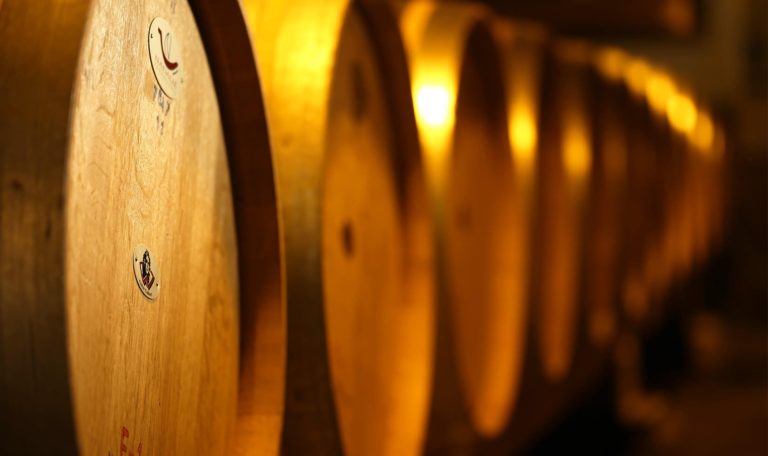Every fall, we begin the meticulous process of selecting oak barrels for aging our youngest vintage of Jordan Cabernet Sauvignon. Unlike many wineries, we don’t follow a recipe for which types of oak barrels we purchase each year. Wine barrel selection decisions–from country of origin (French or American) and forest source, to cooperage, toast level and even age of barrel–are based entirely on taste in the Jordan winemaking process. To ensure no bias in selecting new wine barrels at Jordan, these barrel cooperage sample tastings are conducted blind.
There are many different wine barrel coopers to choose from, and options of barrel type and style will often be available from each cooper, whether they are different sizes, made from the trees of different forests, or have varying toast levels. Every barrel, even if the same make and model, will be slightly different. In fact, all 31 staves that make up a barrel will likely be different from each other. Just as it is imperative for winemakers to understand the personality of each vintage’s grapes, it is equally important for us to understand the personality of the barrels, and to determine whether or not those personalities complement each other.
We start first with tasting tank samples of newborn wines during primary fermentation. This gives us initial impressions of the wine’s fruit, as well as tannin, profile. But we also must ensure that the types of oak barrels we love for aging Jordan Cabernet Sauvignon are still meeting our standards. That’s where blind tastings play a critical role. Blind tasting two vintages of Jordan Cabernet allows us to evaluate our barrel coopers without bias. Our blind tasting rankings are evaluated against our perceptions on the young tank samples to determine the final barrel order, which is placed during harvest. Cooperages are surprised that we reassess the quality of their product every year. We think it keeps them on their toes.
Since 2010, we have be continuing to increase the amount of French oak for aging Jordan Cabernet Sauvignon. The sensational fruit intensity and natural grape tannins lend themselves to the more elegant, subtle nuances that come from a French barrel. French oak actually mollifies the sterner character of Jordan Cabernet Sauvignon, providing a round, soft, complex finish. As soon as Winemaker Rob Davis tasted the first tank sample of 2010 Cabernet Sauvignon, he said, “I can’t wait to put this in a bottle.” We made the decision to move to 100% French oak aging for Jordan wines in 2015.
With every vintage expressing a unique personality, like children, the raising of the wine, or élevage in French, must be specifically tailored in order for its potential greatness to be fully achieved. It is the subtle supporting contributions from barrel aging in the sleepy depths of the winery’s cellar that are responsible for this intensely supervised upbringing of our young wines at Jordan Winery.


